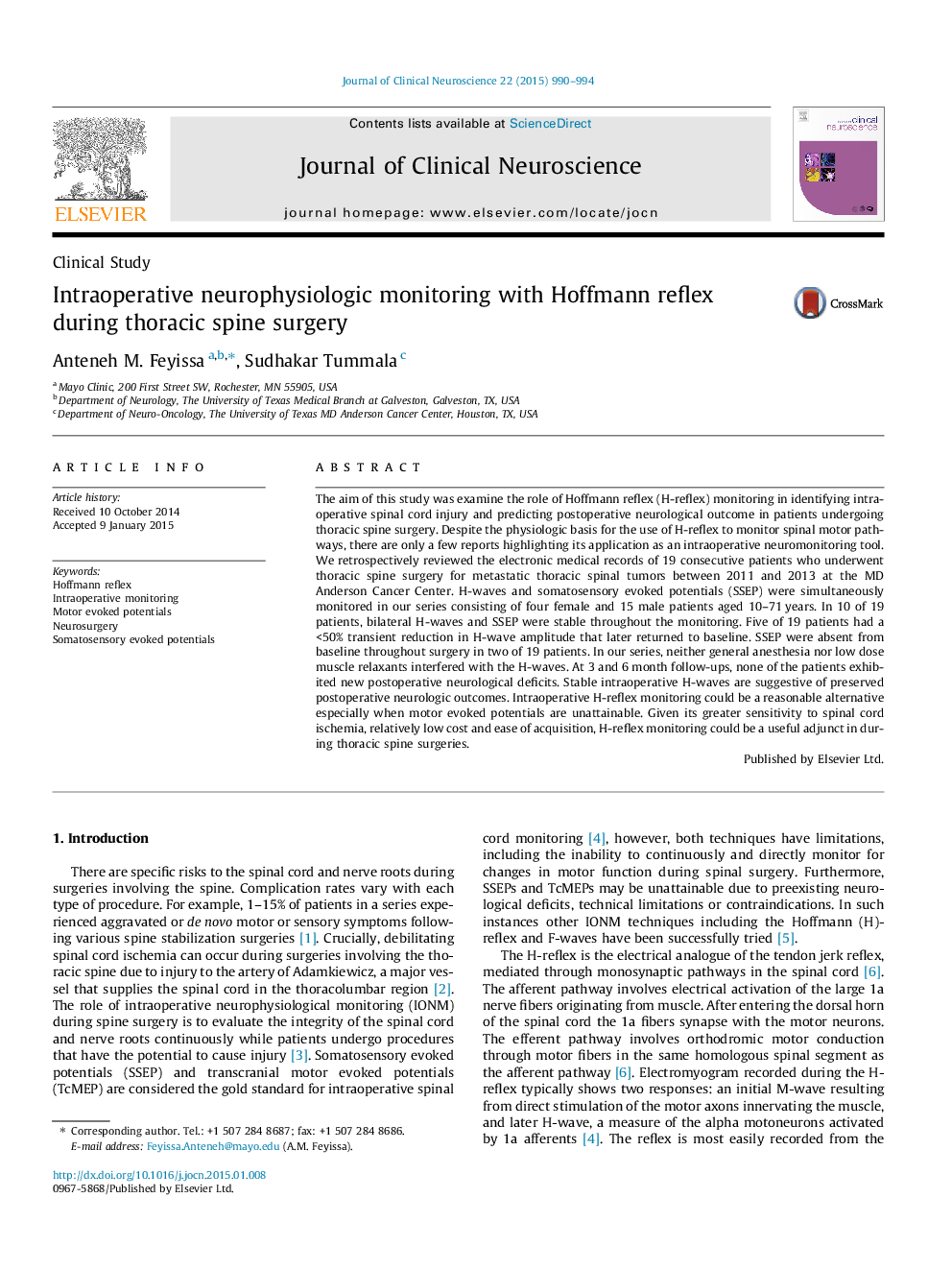| Article ID | Journal | Published Year | Pages | File Type |
|---|---|---|---|---|
| 3059070 | Journal of Clinical Neuroscience | 2015 | 5 Pages |
The aim of this study was examine the role of Hoffmann reflex (H-reflex) monitoring in identifying intraoperative spinal cord injury and predicting postoperative neurological outcome in patients undergoing thoracic spine surgery. Despite the physiologic basis for the use of H-reflex to monitor spinal motor pathways, there are only a few reports highlighting its application as an intraoperative neuromonitoring tool. We retrospectively reviewed the electronic medical records of 19 consecutive patients who underwent thoracic spine surgery for metastatic thoracic spinal tumors between 2011 and 2013 at the MD Anderson Cancer Center. H-waves and somatosensory evoked potentials (SSEP) were simultaneously monitored in our series consisting of four female and 15 male patients aged 10–71 years. In 10 of 19 patients, bilateral H-waves and SSEP were stable throughout the monitoring. Five of 19 patients had a <50% transient reduction in H-wave amplitude that later returned to baseline. SSEP were absent from baseline throughout surgery in two of 19 patients. In our series, neither general anesthesia nor low dose muscle relaxants interfered with the H-waves. At 3 and 6 month follow-ups, none of the patients exhibited new postoperative neurological deficits. Stable intraoperative H-waves are suggestive of preserved postoperative neurologic outcomes. Intraoperative H-reflex monitoring could be a reasonable alternative especially when motor evoked potentials are unattainable. Given its greater sensitivity to spinal cord ischemia, relatively low cost and ease of acquisition, H-reflex monitoring could be a useful adjunct in during thoracic spine surgeries.
